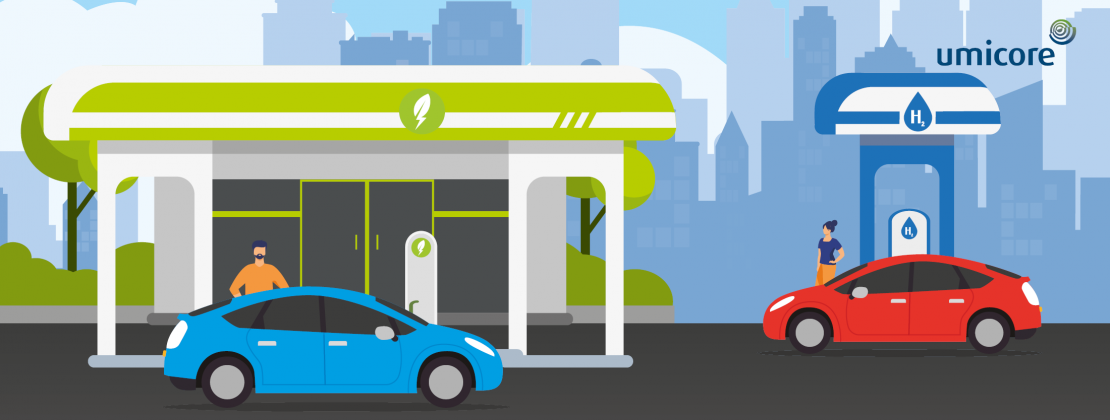Hydrogen and battery vehicles will co-exist, for different applications. The overall efficiency of battery wins out for most passenger cars.
Another electromobility myth! Electric vehicles increasingly become part of our daily lives. Yet some people still have doubts. To separate the fact from the fiction, we debunk some common EV myths. Read the article to know more!
Both types of mobility have their advantages and disadvantages. It will be a question of matching the technology with the application. In the short-to-medium term, battery vehicles will be the main carbon-free mobility solution. But in the long term, both types are likely to co-exist.
While battery electric vehicles (BEVs) may be more energy efficient and are currently cheaper than fuel-cell electric vehicles (FCEVs), there is little doubt that FCEV technology will improve and its cost will decrease over time. This will require political will, lower purchase prices and large-scale development of hydrogen refueling stations.
The right technology for each application
An FCEV requires over twice as much energy as a BEV to drive the same distance. Assuming both vehicles derive their energy from 100% sustainable sources, overall “well-to-wheel” efficiency of an FCEV is 30%, while a BEV can achieve 77%.
However, the longer the route and the larger the payload, the more benefits hydrogen can offer. BEVs have higher energy efficiencies, but today’s heavy battery weight minimizes this advantage, especially for long ranges. Hydrogen would add less weight and refueling is quicker.
Due to this trade-off, FCEVs are mostly attractive for heavy-duty transport, aviation and shipping, as well as light-duty long-range transport, like intercity taxis. Today, most major OEMs are still in the R&D stage when it comes to heavy-duty fuel-cell trucks. The first should be on the road by 2025.
Meanwhile, for nearly all passenger cars – the vast majority of the world’s powered vehicles – BEVs will remain the likely choice. Currently, only a few FCEVs are available. They are forecasted to become mainstream only after 2030. In Europe this evolution will be actively supported by the EU Hydrogen Strategy, which aims to create a European hydrogen eco-system.
It’s important to note that an FCEV also has a battery (about 10% the size of a BEV). So mass-market FCEV adoption would still considerably boost the Li-Ion battery industry.


